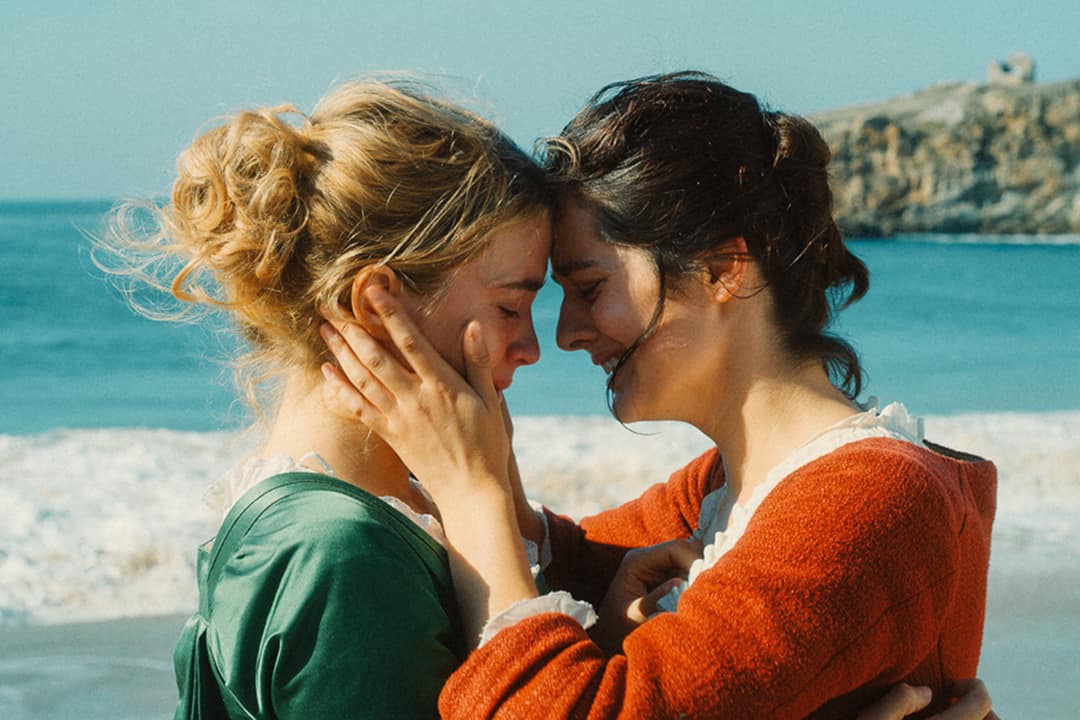When the lights came up in the Winter Garden theatre mere seconds after the credits began to roll, I felt betrayed by the caustic brightness. I was positively sobbing. Portrait of a Lady on Fire is French director Céline Sciamma’s fourth feature film, and it premiered at the Cannes Film Festival in May. After it won the screenplay prize at the festival, I knew that it was going to be good, and after watching all of Sciamma’s past work to prepare, I knew it was going to be even better than I thought. Finally, after seeing the film at TIFF this year, reader, I can only describe it as the most admirable film I have ever seen.
This period piece follows a young painter named Marianne, who is commissioned for a portrait of a subject who refuses to be painted. Each shot is as beautiful as Marianne’s painting, lit with only natural light and photographed largely outdoors at a cliffside beach and inside the simple French mansion. The pureness of the blacks and the starkness of the whites in the frame punctuate moments of stirring dialogue. Sciamma spends a great deal of time with Marianne’s meticulous hand, sketching and painting various pivotal moments of the film.
The nature of her work is classical, but it’s imbued with bottomless integrity and emotion. As Marianne notes, the conventions of art at the time are specific and limiting, while Sciamma’s approach to her own art is profound and riveting.
Marianne and Héloïse share glances and whispers, and much of the film is composed of watching them look at each other. These prolonged moments of looking might have been lifeless, but the coursing energies between the two are captivating. It is also quite radical, as the way they look at each other, and indeed the way Sciamma’s camera soaks them up, embodies a new sort of gaze for the cinema, one that is distinctly intimate and distinctly female. Unlike an unfortunate number of films with queer subject matter, Portrait of a Lady on Fire could never be accused of hetero-lensed lesbian relations to check some representational box. The beauty of the film lies in the core of what it means for women to love women; their lesbian relations are not incidental but integral.
So much of their courtship is quiet and unsaid, until it isn’t. Marianne and Héloïse are scared but thrilled, and because of the generally reserved contact their smiles are cathartic expressions of joy. At the post-film Q&A, Sciamma told us that she often uses music to act as an important moment of dramatic composition, and several times in the film this comes to fruition. Most notably in a striking scene around a bonfire where a choir performs acapella, and in a final churning and astonishing shot.
Beyond these few moments of musical release, the soundtrack is silent, as we are consumed by the growing joy and liveliness of Marianne and Héloïse’s relationship. We spend so much time with these heroines that, when a man appears near the end of the film, it truly feels jarring. The currents running through the film are feminine and bold, and they feel like less of a statement and more of a given.
When I exited the theatre I found myself in a rainstorm on Victoria street, sure that I looked like a wreck, I could only smile. I would not call this movie sad, or happy, or any word that suggests I could quantify exactly what Portrait of a Lady on Fire did to me. I would not even say fabulous, effective, exquisite. I would call this movie unimpeachably perfect, and so invested in art’s ability to make you feel that it absorbed all of my feelings and left me shipwrecked in a rainy downtown Toronto. Sciamma has unlocked something here, something so devastating and sparkly that it’s a wonder we ever lived without it.


